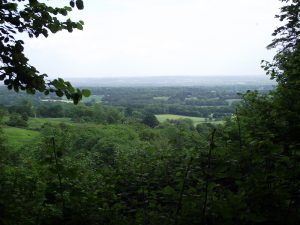Areas of outstanding natural beauty (AONBs)* 
An area of outstanding natural beauty (AONB) is land protected by the Countryside and Rights of Way Act 2000 (CROW Act). It protects the land to conserve and enhance its natural beauty. The CROW Act sets out the roles and responsibilities that different organisations must follow to manage AONBs. There are 34 AONBs in England.
Under the CROW Act, all decisions must have regard for the purpose of conserving and enhancing the natural beauty of the AONB. Only local authorities or the Secretary of State can give permission for development in, or affecting, an AONB.
Ide Hill is within an area of outstanding natural beauty (AONB).
Natural England’s responsibilities
Under the CROW Act, Natural England can make orders to designate AONBs or vary the boundaries of existing ones. These powers apply to England only.
Natural England has the discretion to consider whether to assess and designate an area as an AONB. Natural England will prioritise proposals by considering if:
- evidence suggests the land might meet the natural beauty criterion
- there’s local authority agreement that designation is appropriate
- it has the available resource to evaluate the proposal
- it’s more important than other corporate priorities
For existing AONBs, Natural England must:
- give advice to local planning authorities on development proposals in an AONB
- consider the conservation and enhancement of AONBs in its work, for example when carrying out land management activities or giving permission for statutory bodies to carry out works in an AONB
Meet the natural beauty criterion
Before Natural England proposes an area becomes an AONB, it must meet the ‘natural beauty criterion’. This could be a combination of factors, such as:
- landscape quality, where natural or man-made landscape is good quality
- scenic quality, such as striking coastal landforms
- relative wildness, such as distance from housing or having few roads
- relative tranquillity, where natural sounds, such as streams or birdsong are predominant
- natural heritage features, such as distinctive geology or species and habitat
- cultural heritage, which can include the built environment that makes the area unique, such as archaeological remains or historic parkland
Development proposals affecting AONBs
Only local authorities or the Secretary of State can give permission for development in, or affecting, an AONB. As a local authority, you must make sure that any proposals have regard for the purpose of conserving and enhancing the natural beauty of the AONB, for example when:
- adding utility services, like gas pipes and telecommunications cables
- creating public access as part of rights of way improvement
*This information is taken from the Government website.. All content is available under the Open Government Licence v3.0. Please visit the site for further information.